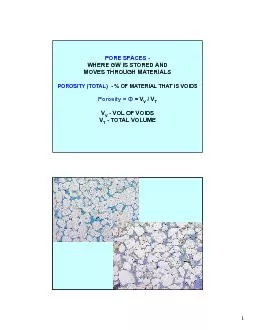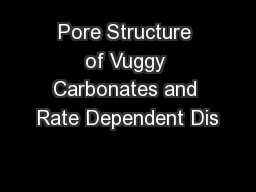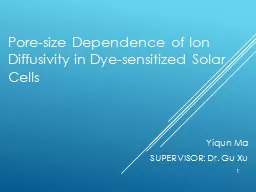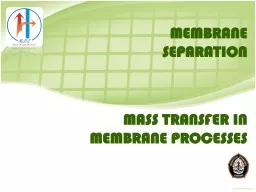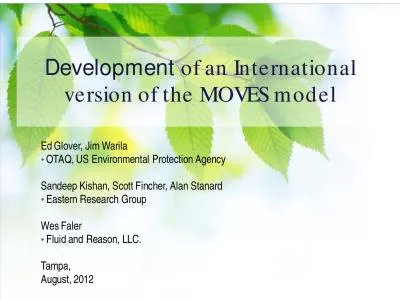PDF-PORE SPACES -WHERE GW IS STORED AND MOVES THROUGH MATERIALS
Author : kittie-lecroy | Published Date : 2017-03-06
1 POROSITY TOTAL OF MATERIAL THAT IS VOIDSPorosity V V VOLOFVOIDS V V TOTAL VOLUME 2 SOIL ENGINEERS USE VOID RATIO SvVVe VOL OF VOIDSVOL OF SOLIDS Relationshipofvoidratioandporosity Re
Presentation Embed Code
Download Presentation
Download Presentation The PPT/PDF document "PORE SPACES -WHERE GW IS STORED AND MOVE..." is the property of its rightful owner. Permission is granted to download and print the materials on this website for personal, non-commercial use only, and to display it on your personal computer provided you do not modify the materials and that you retain all copyright notices contained in the materials. By downloading content from our website, you accept the terms of this agreement.
PORE SPACES -WHERE GW IS STORED AND MOVES THROUGH MATERIALS: Transcript
Download Rules Of Document
"PORE SPACES -WHERE GW IS STORED AND MOVES THROUGH MATERIALS"The content belongs to its owner. You may download and print it for personal use, without modification, and keep all copyright notices. By downloading, you agree to these terms.
Related Documents

